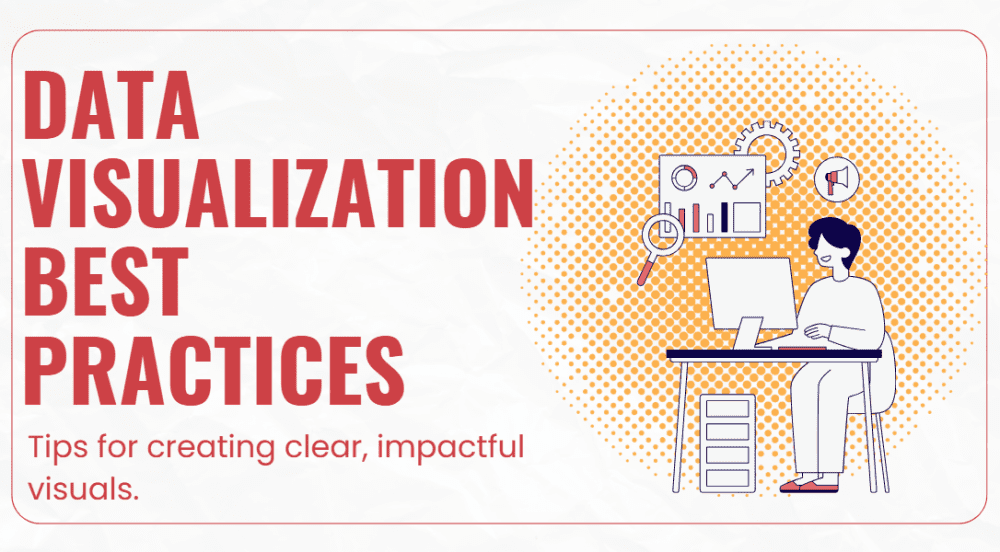Effective data visualization turns complex data into compelling stories. In this blog post, we explore three essential best practices for creating impactful visualizations—keeping it simple, using color wisely, and labeling clearly—based on insights from a recent lecture video.
Best Practices for Data Visualization
Keep It Simple
Simplicity is key to clear insights. Cluttered visuals distract from the data, making it hard for audiences to focus. Streamline your designs to highlight essential information, ensuring your visuals are easy to understand at a glance.
Use Color Wisely
Color should enhance, not confuse, your visualizations. A thoughtful color palette draws attention to key data points without overwhelming viewers. Avoid excessive or random colors to maintain clarity and focus.
Label Everything Clearly
Clear labels guide audiences through your visuals effortlessly. Every chart, graph, or table should tell a story with intuitive labeling, ensuring viewers understand the data without guesswork. This enhances the impact of your visualizations.
Applying These Practices
These practices elevate your ability to communicate data effectively. Tools like Analytics.in simplify the process by allowing easy switches between chart types, such as bar charts to radial bar charts, for better contrast and storytelling. By prioritizing simplicity, strategic color choices, and clear labeling, you create professional-grade visualizations that resonate with audiences.
Watch the Video
Conclusion
Mastering data visualization transforms complex information into actionable insights. By keeping designs simple, using color strategically, and labeling clearly, you can craft visuals that drive understanding and inspire action. Watch the video above for a quick guide, and explore tools like Analytics.in to create stunning visualizations today.
Explore Textify’s AI membership
Need Data? Explore AI Search Engine for Data Lovers
Explore insights with Textify Analytics
